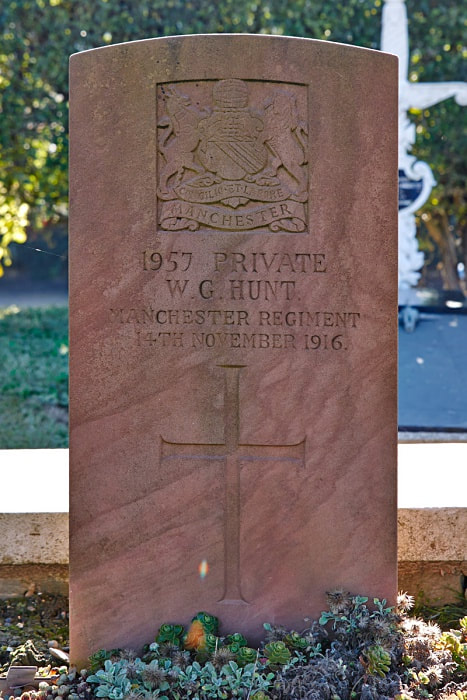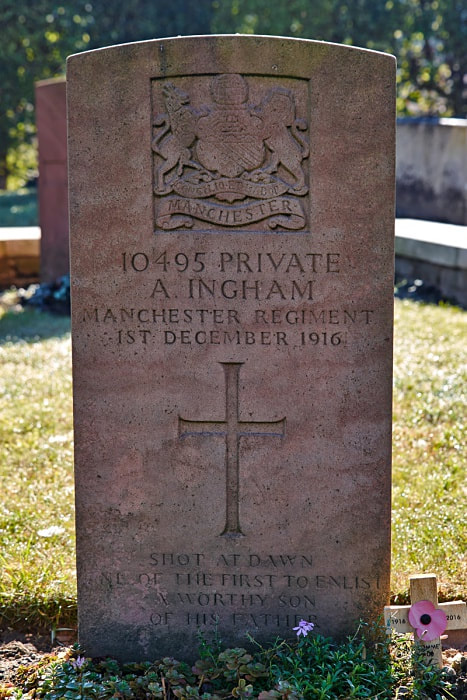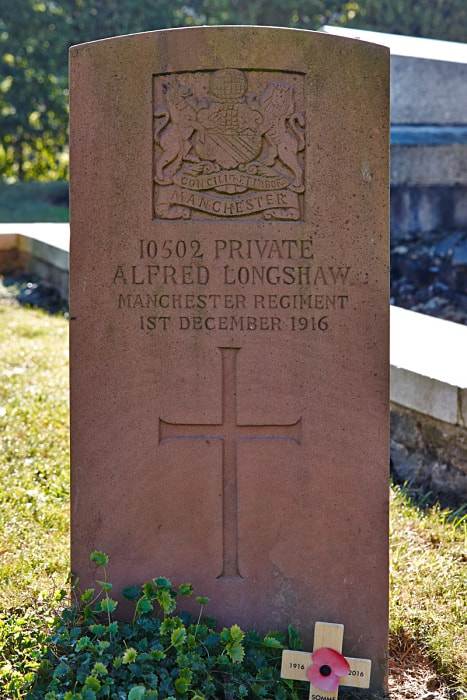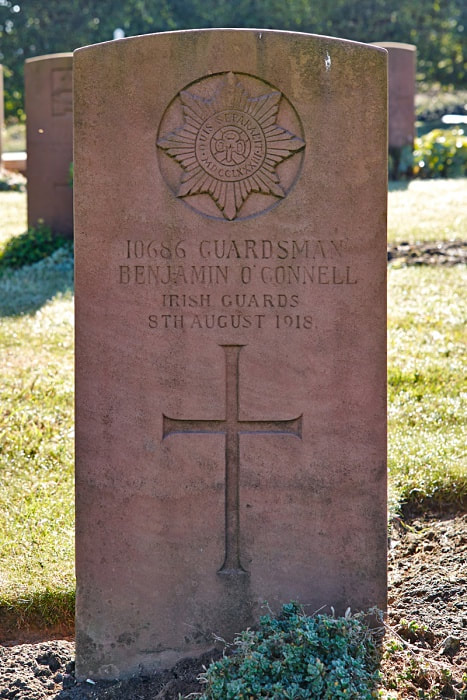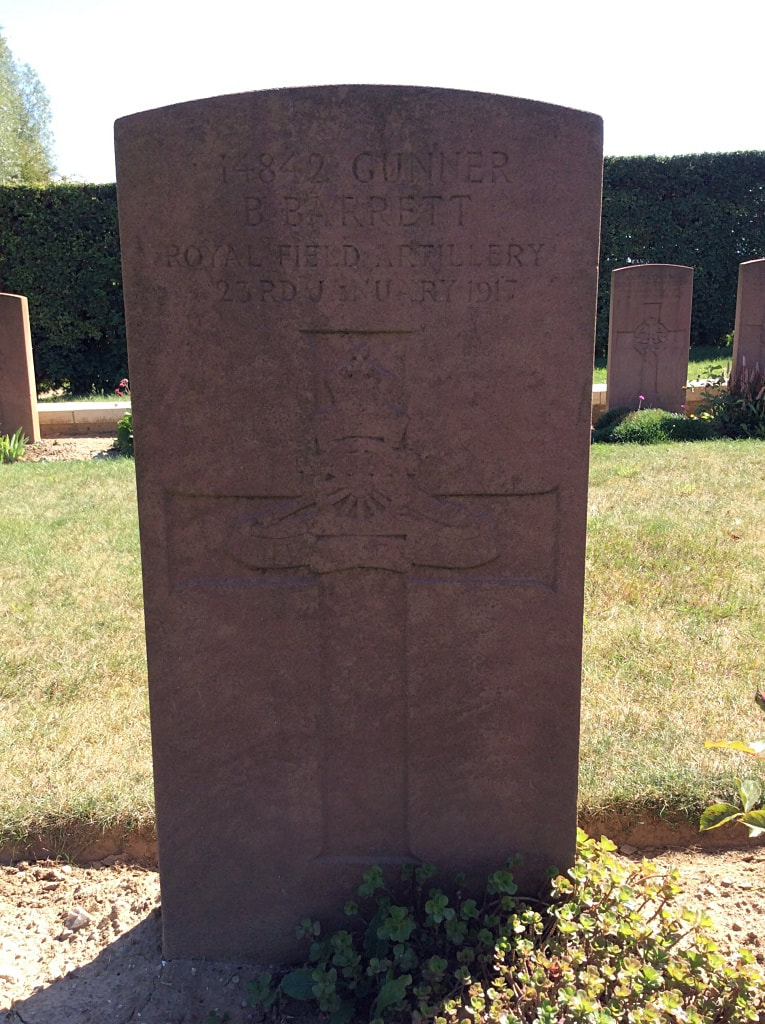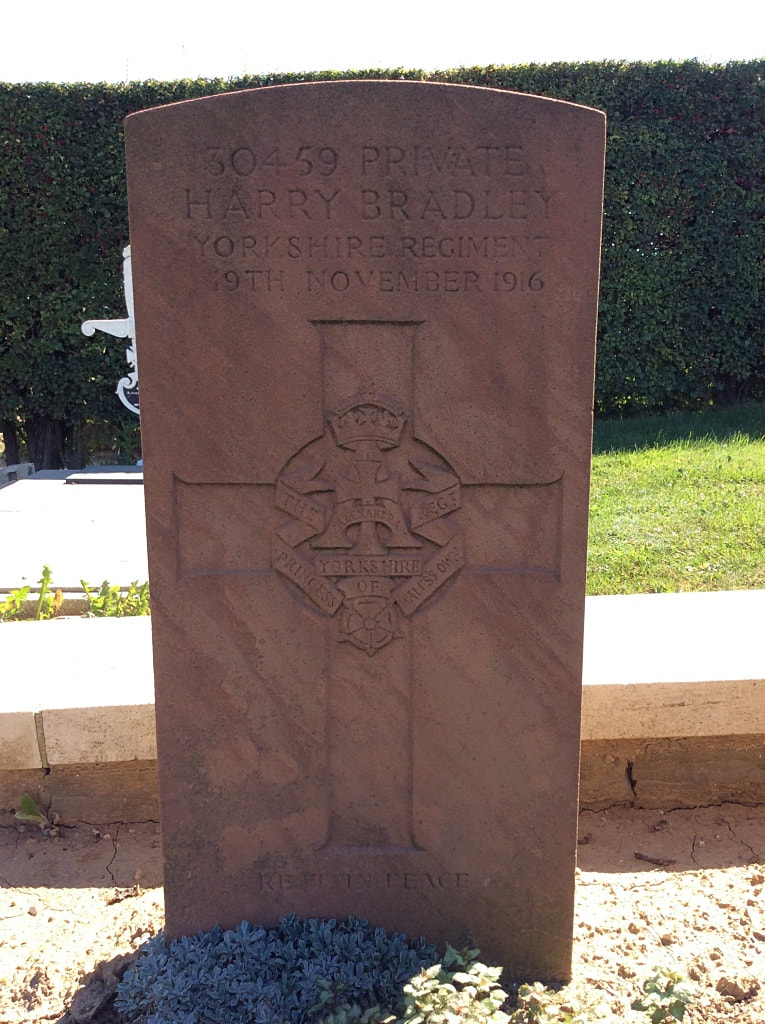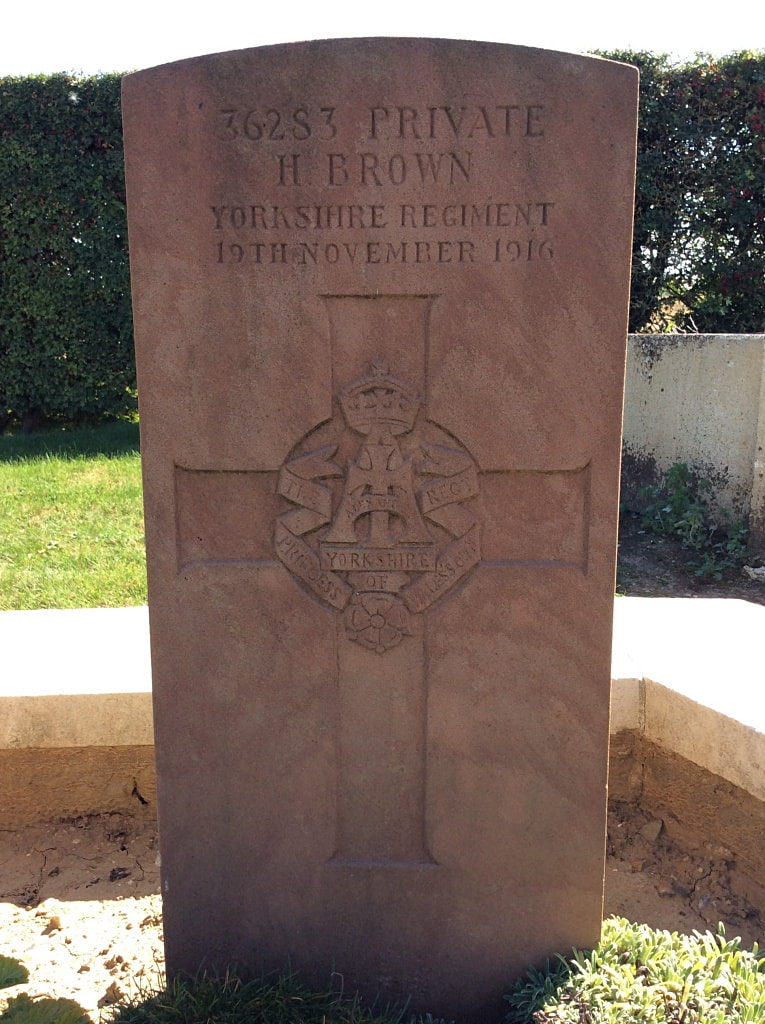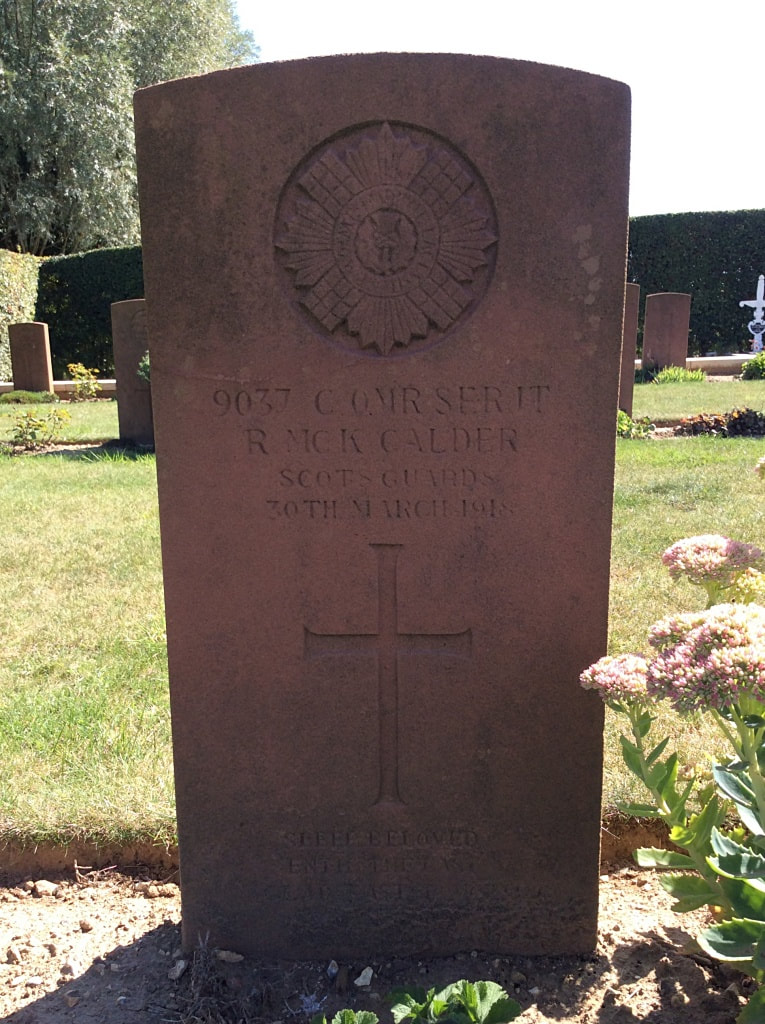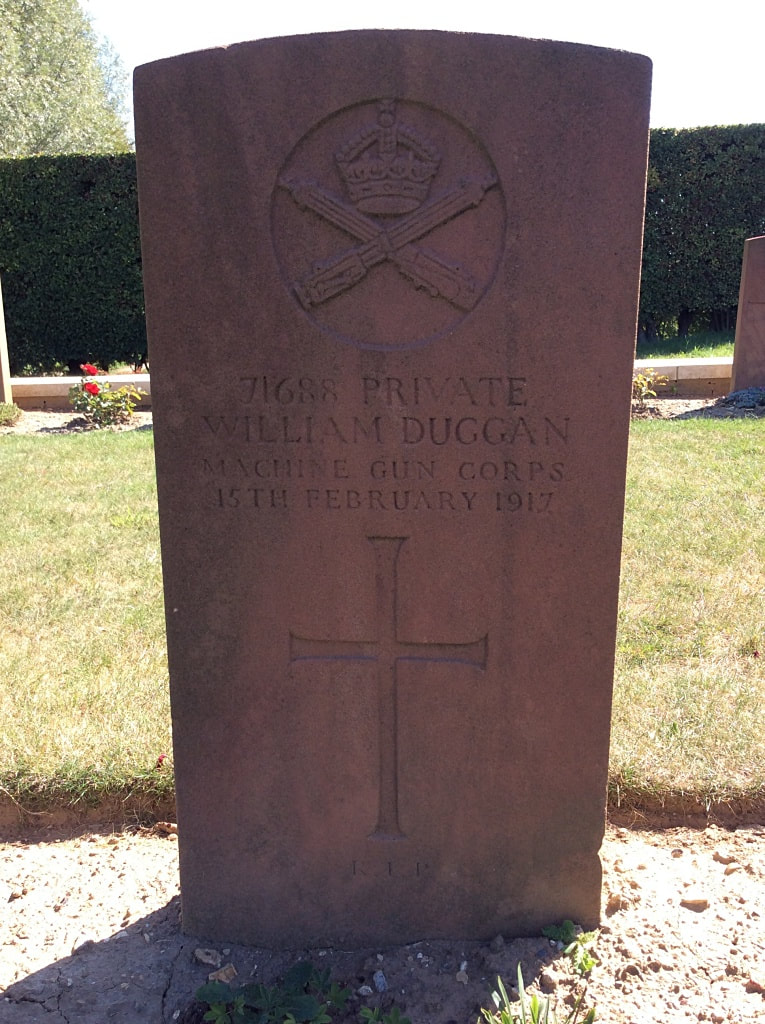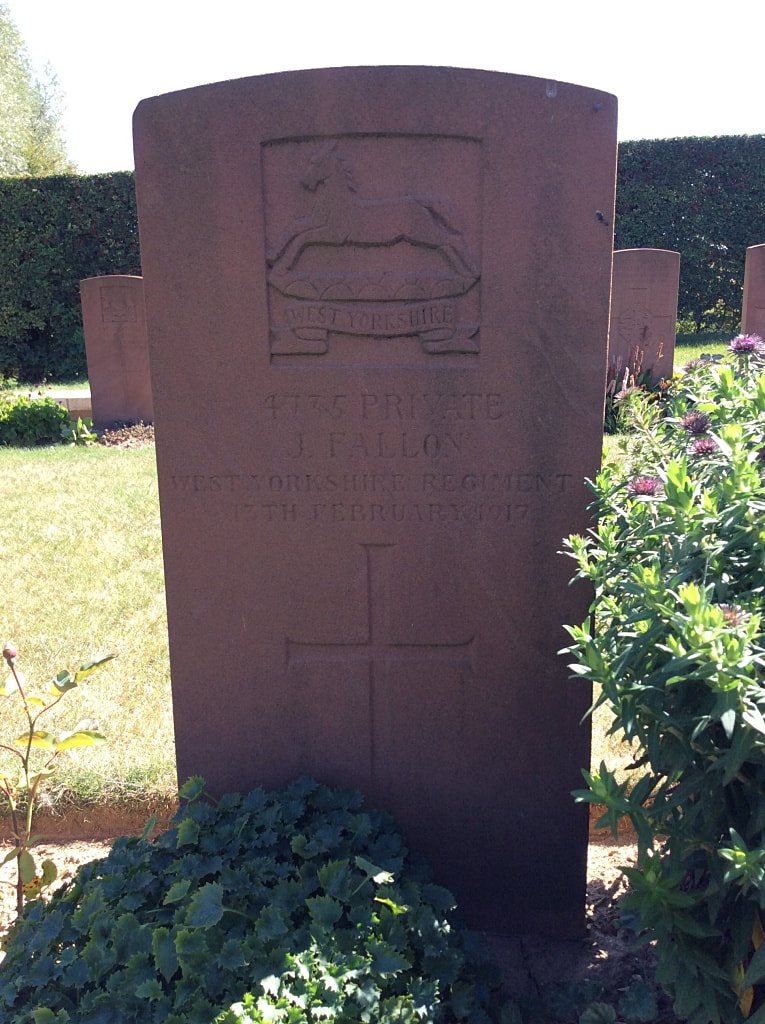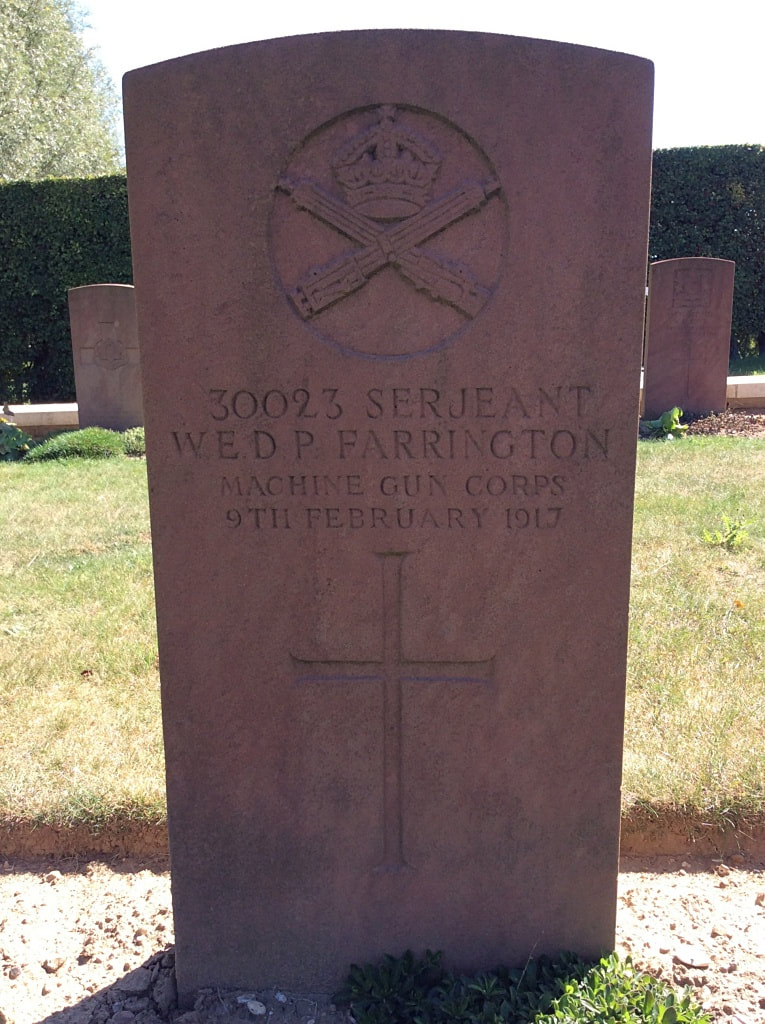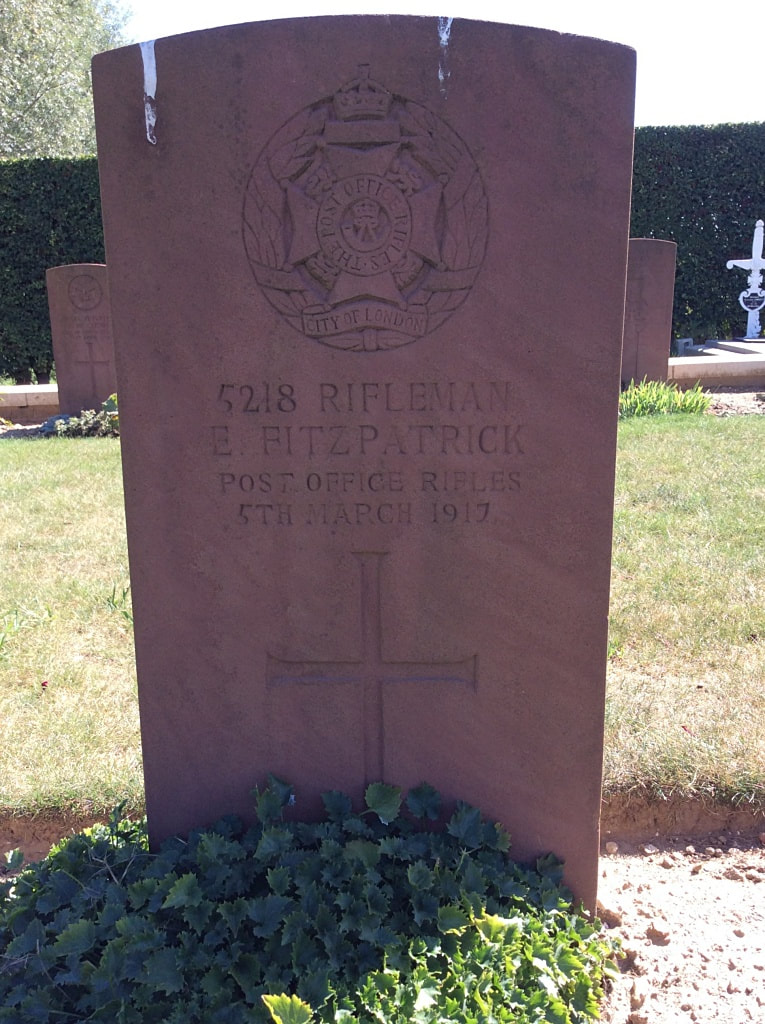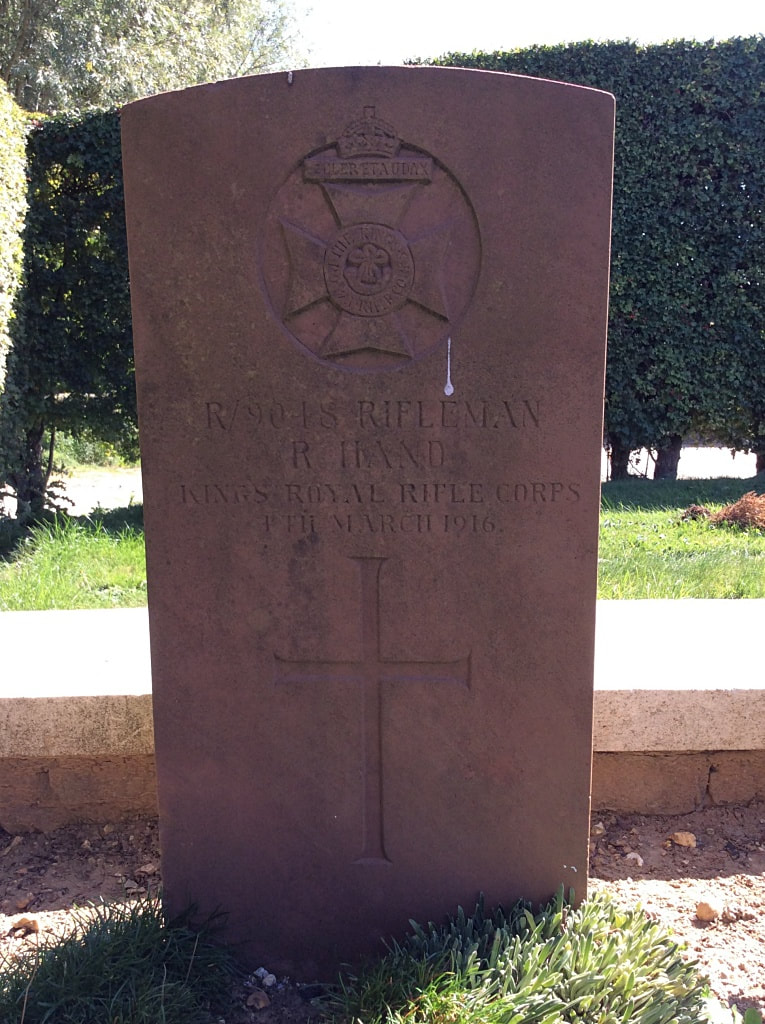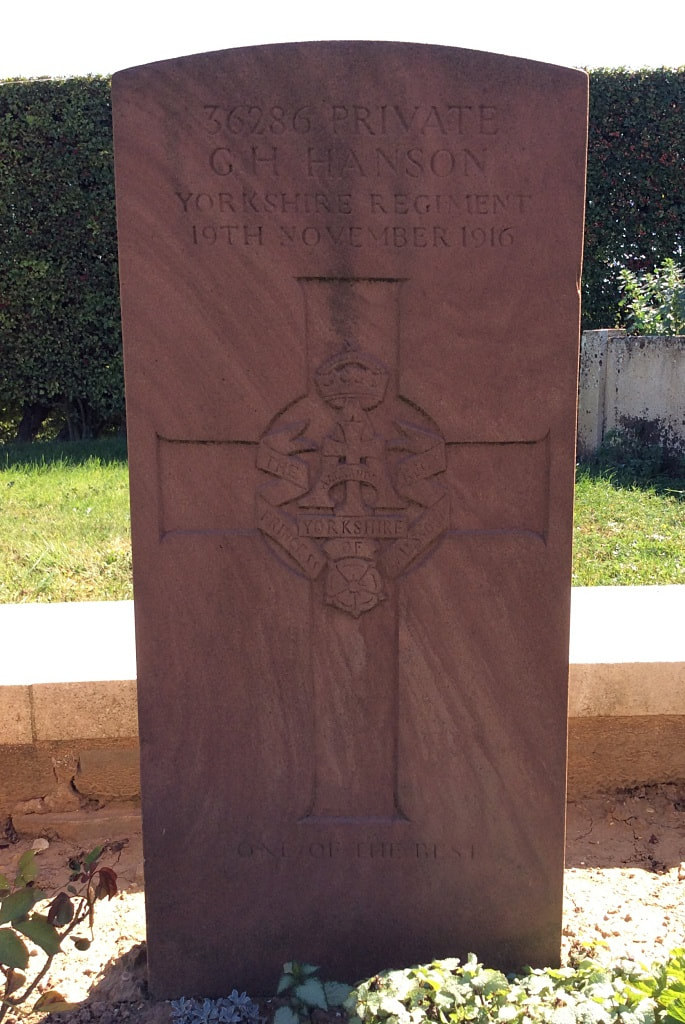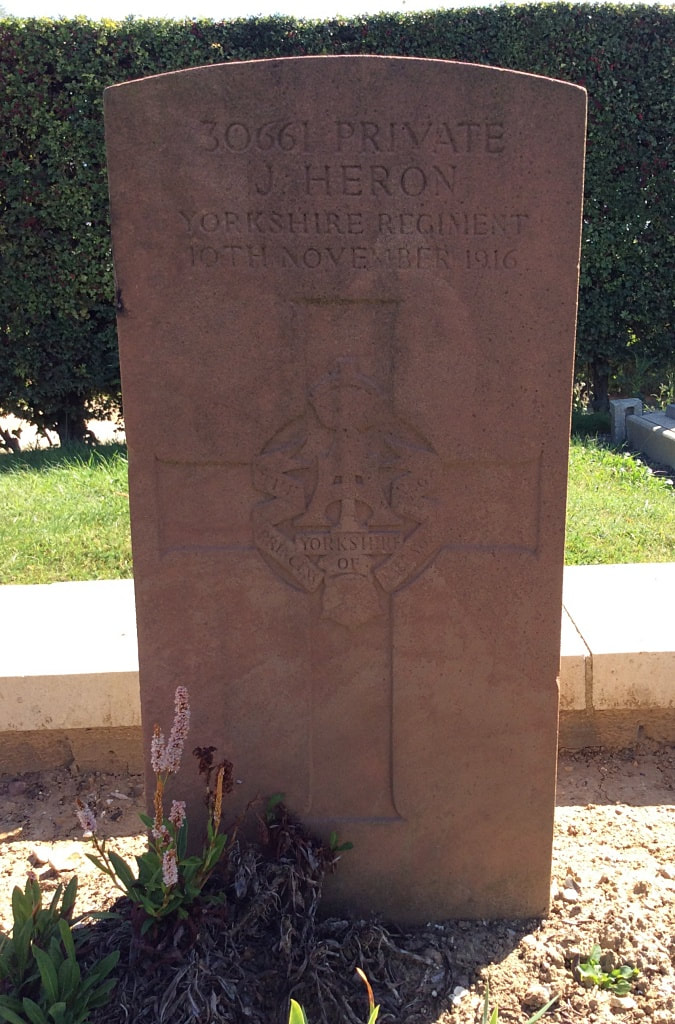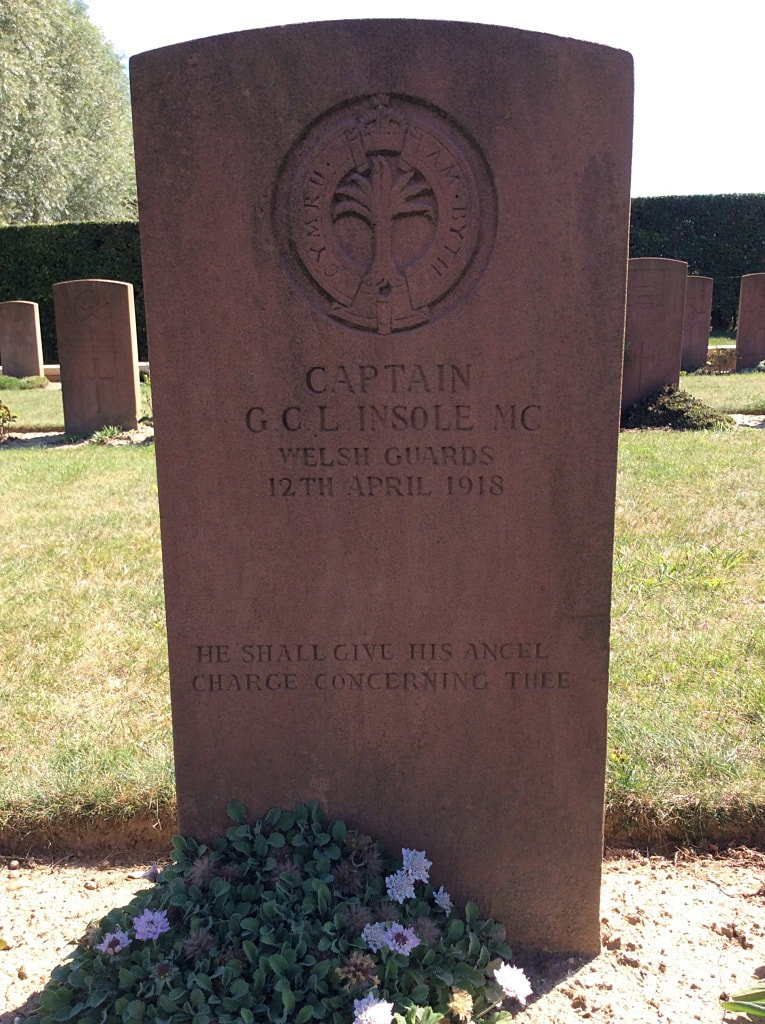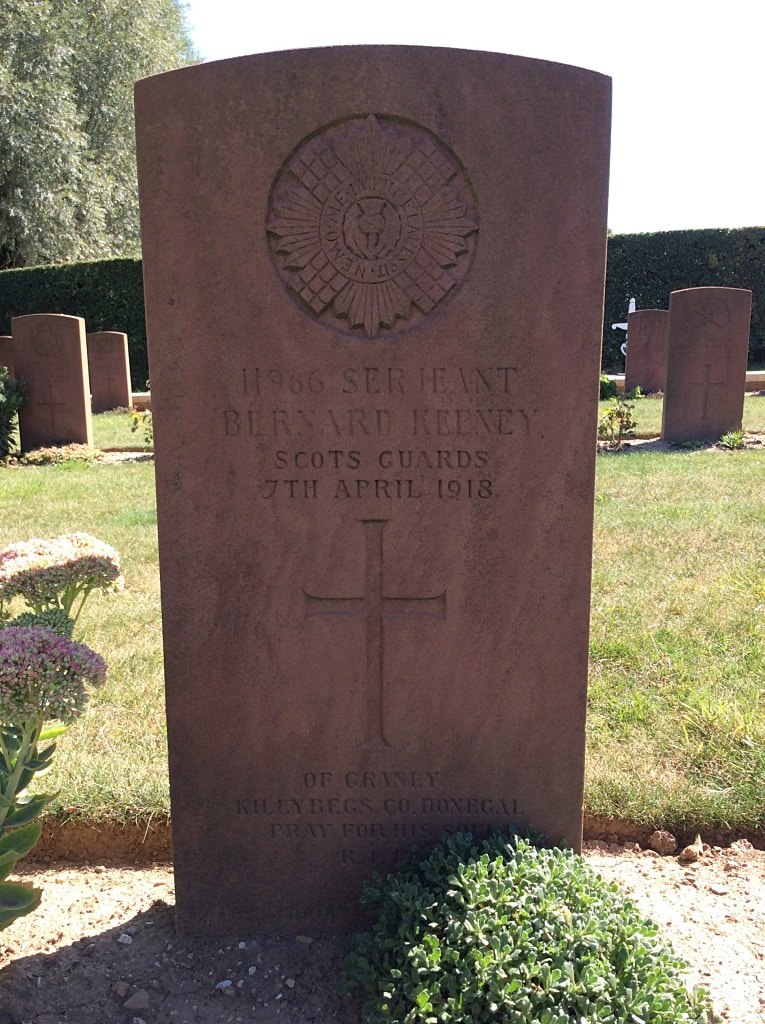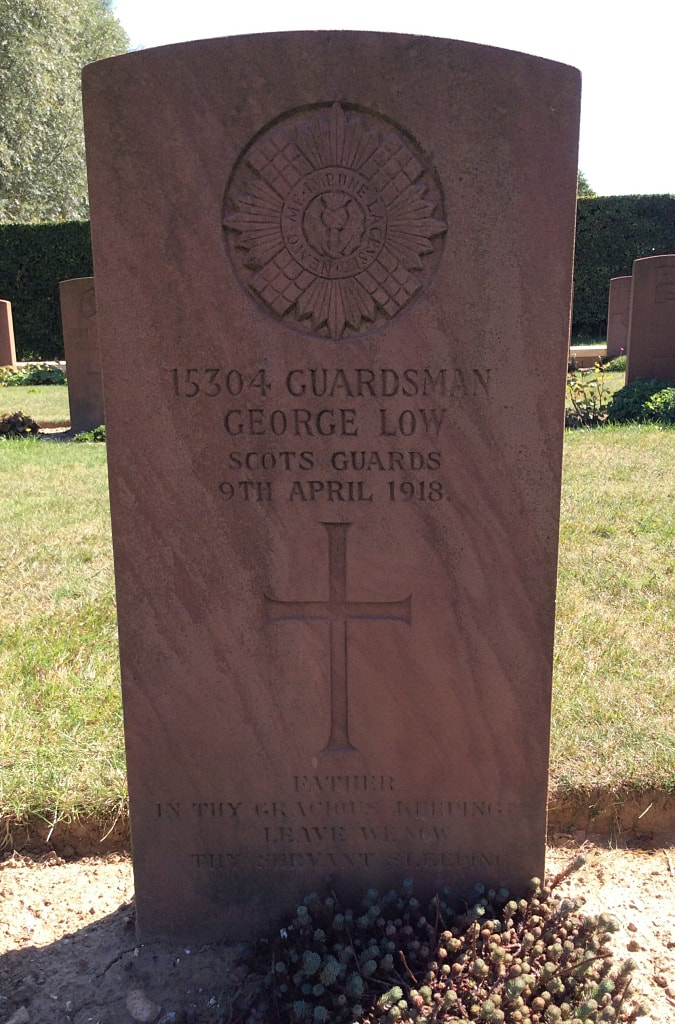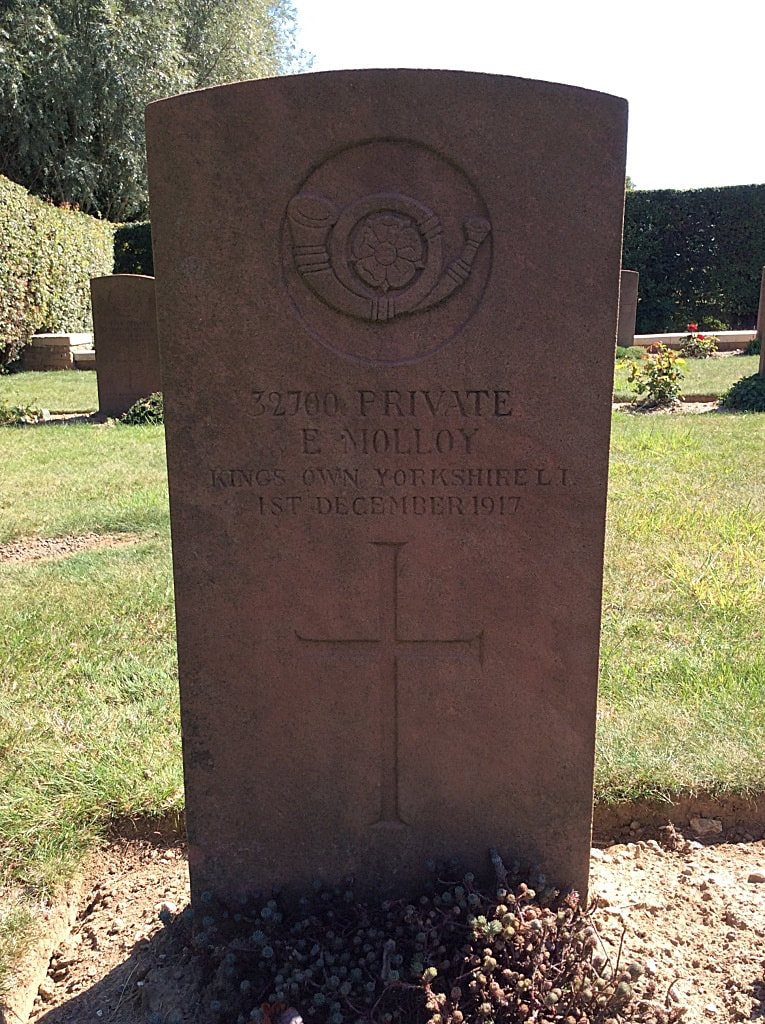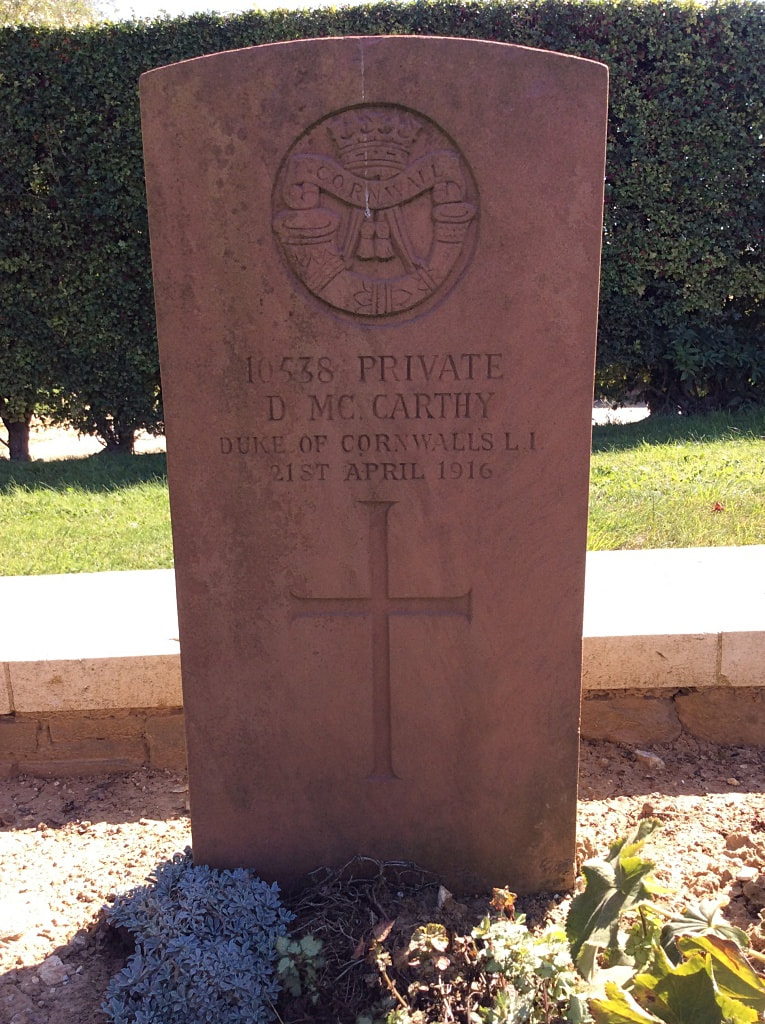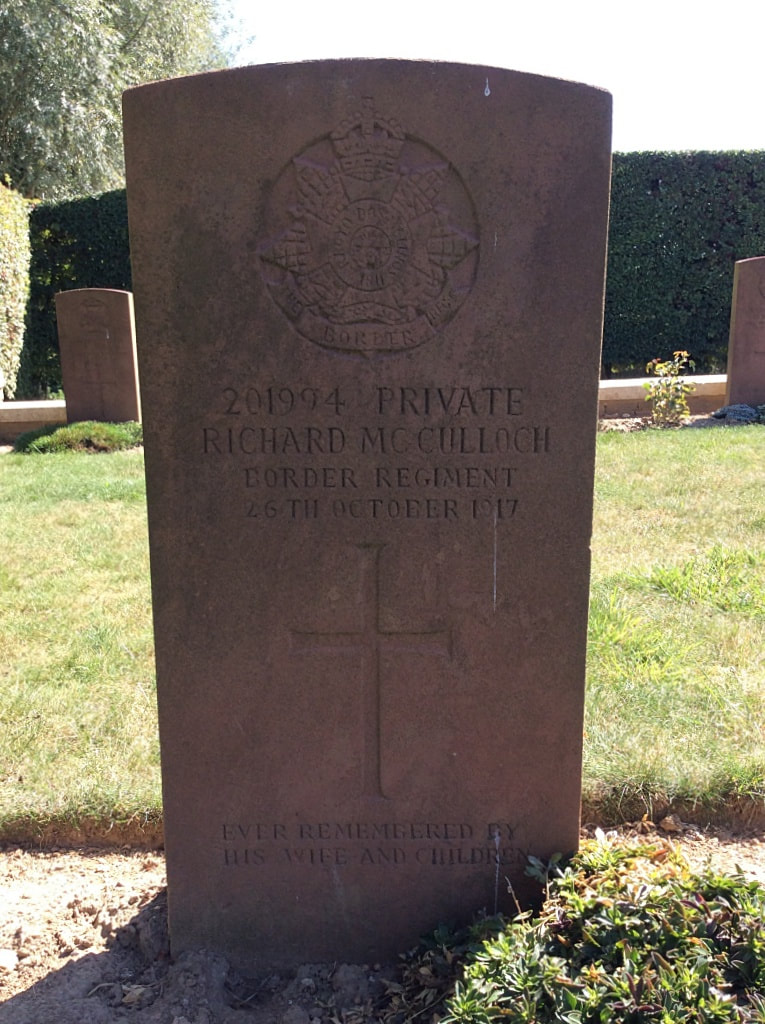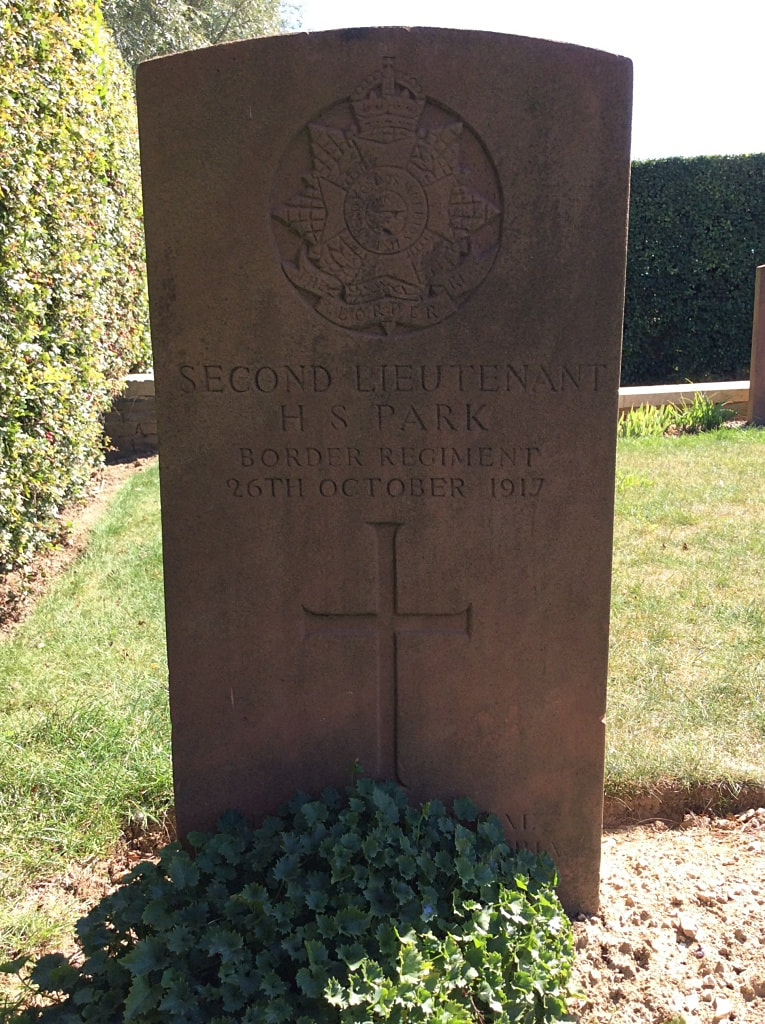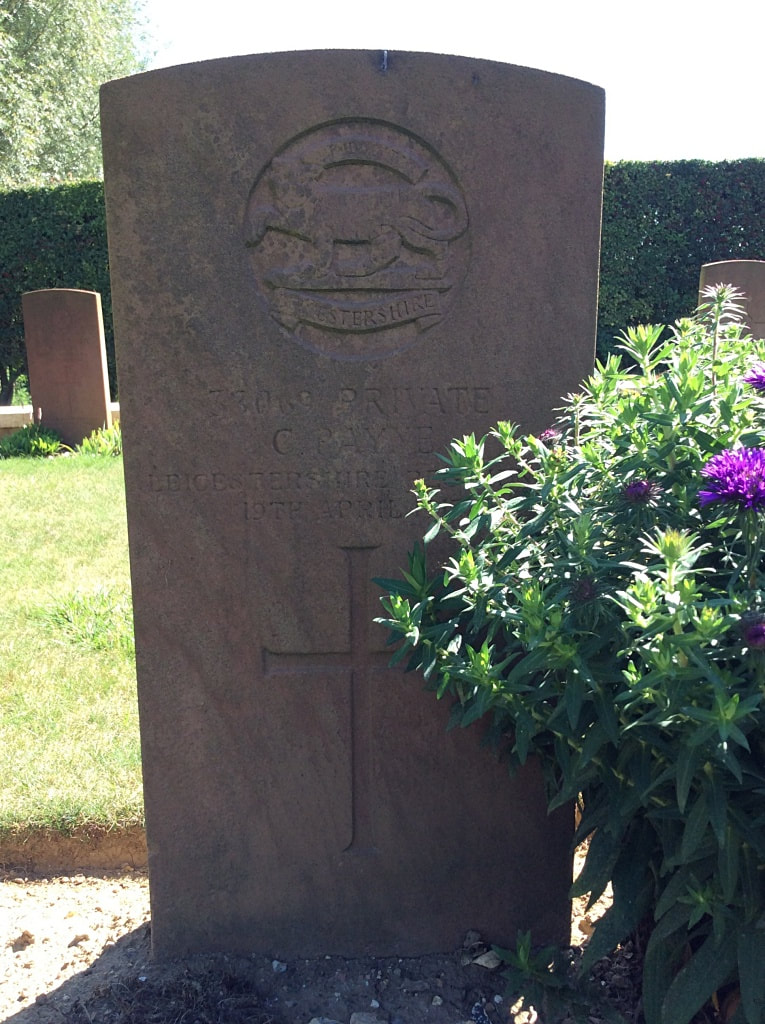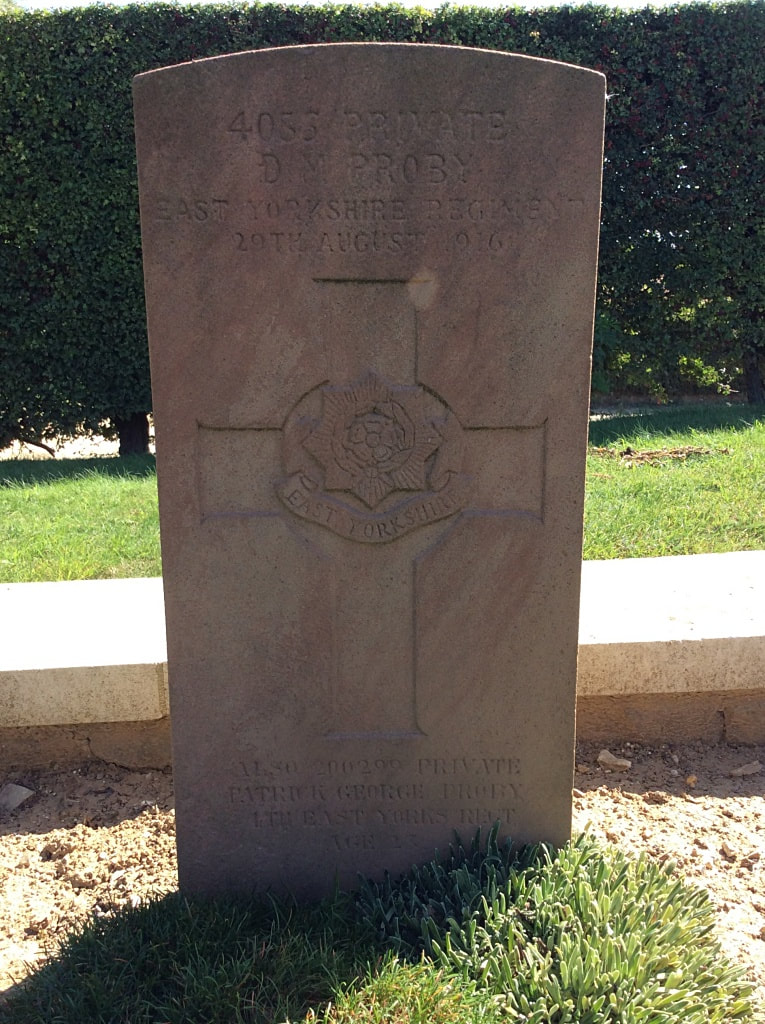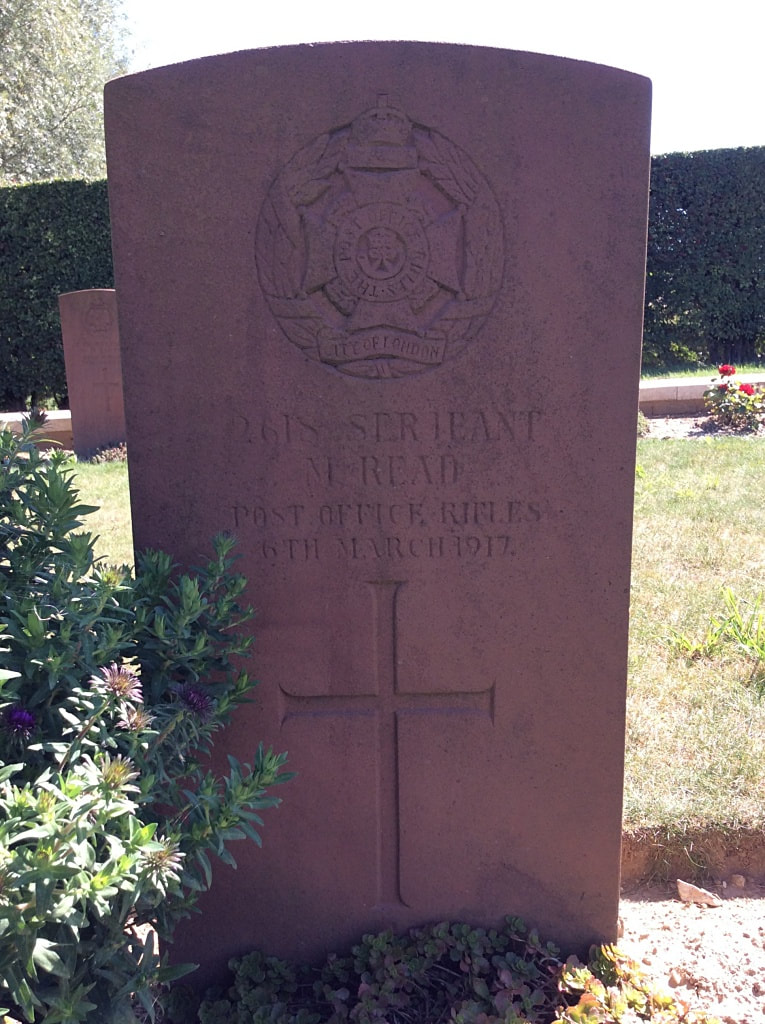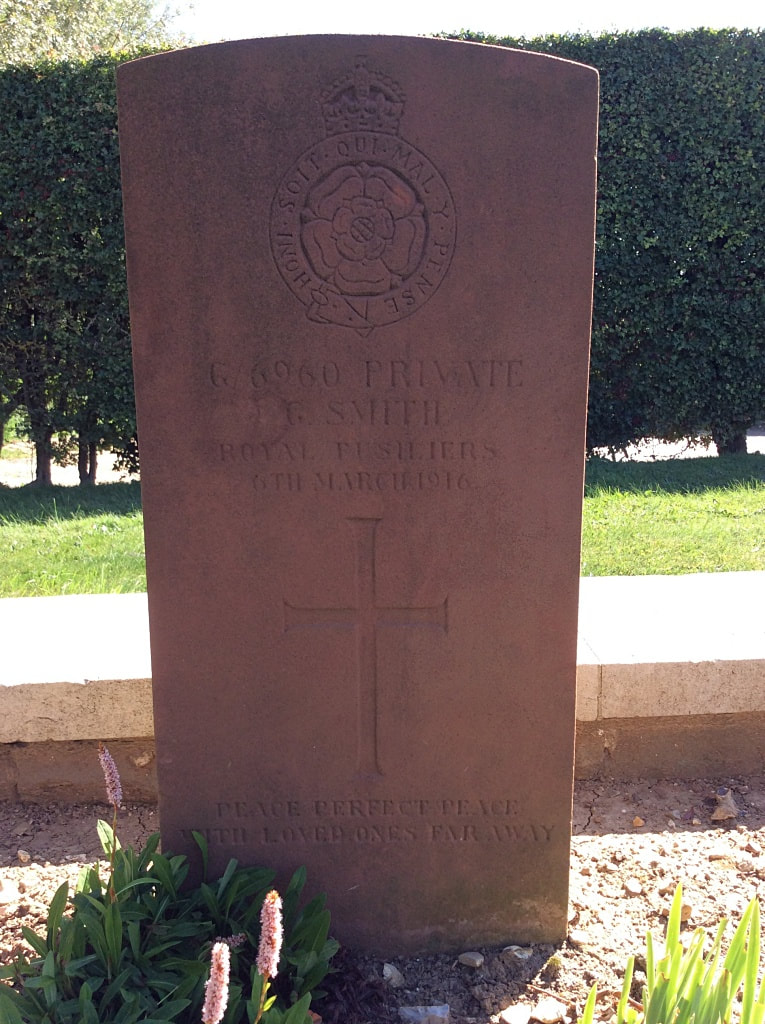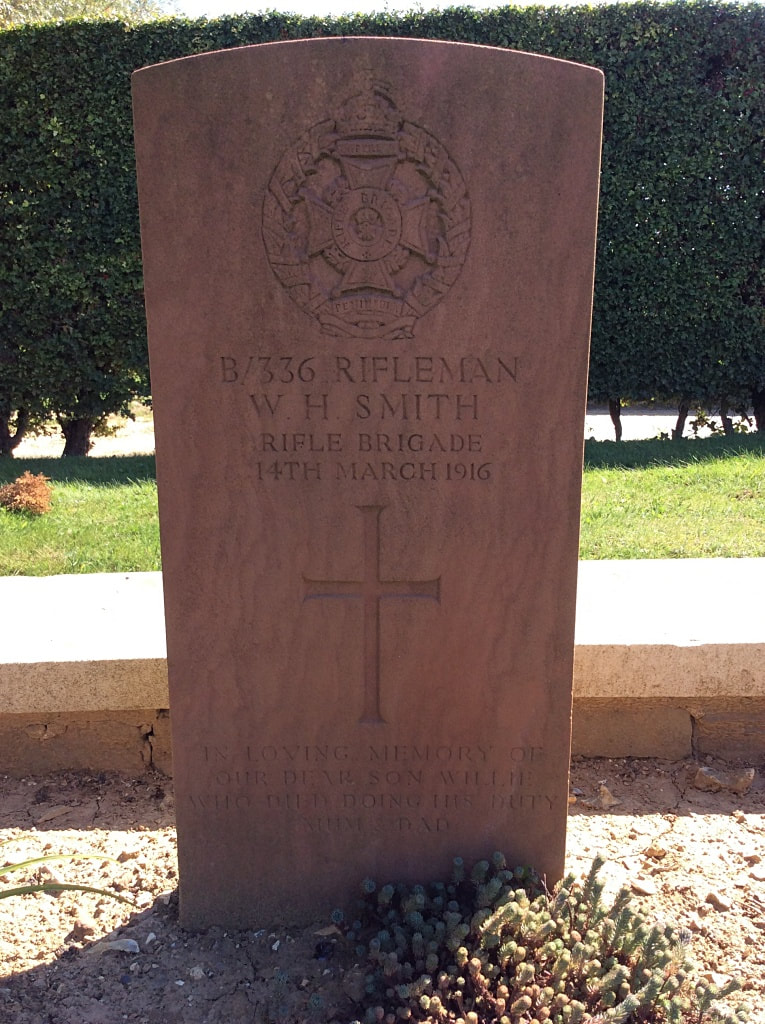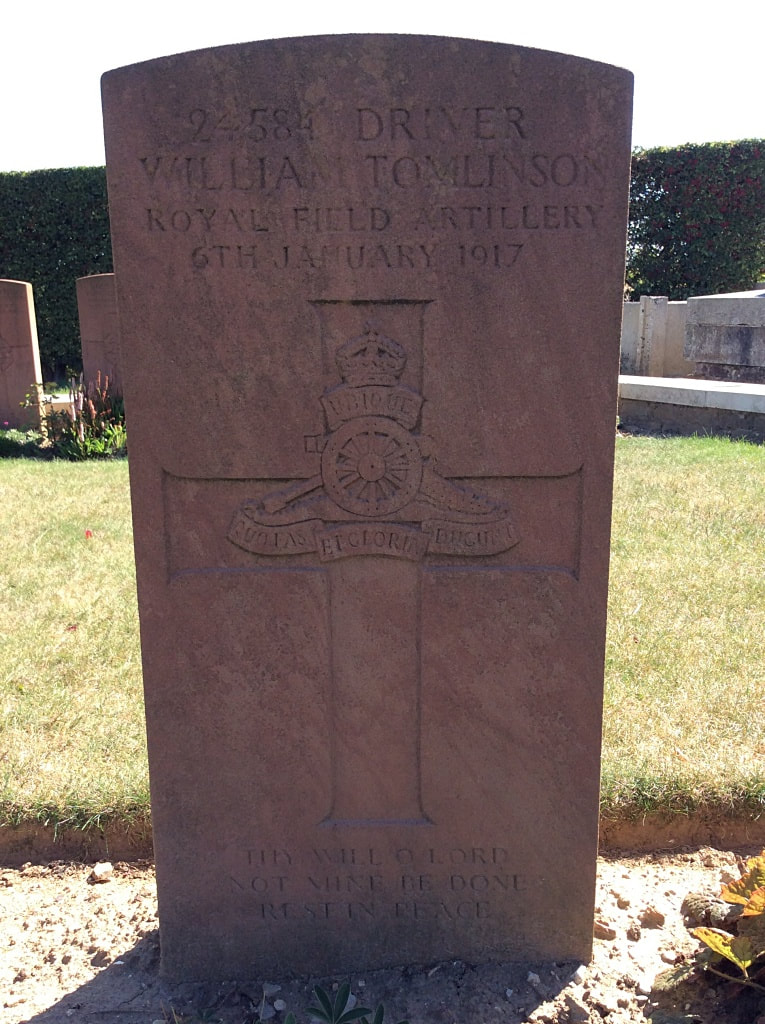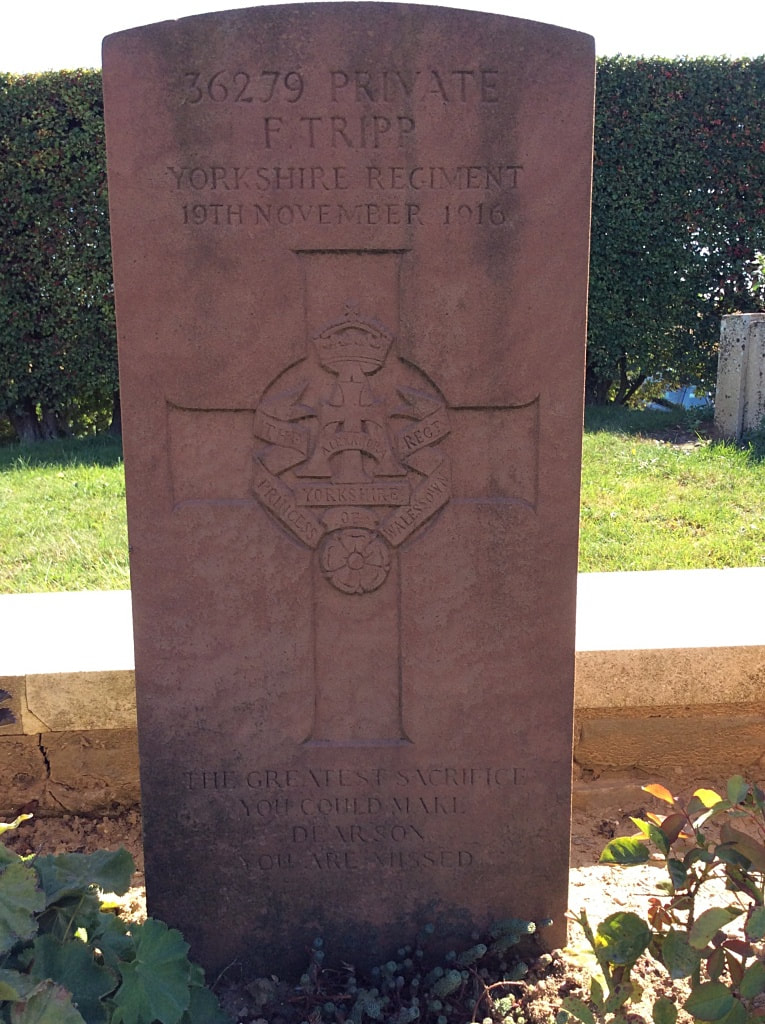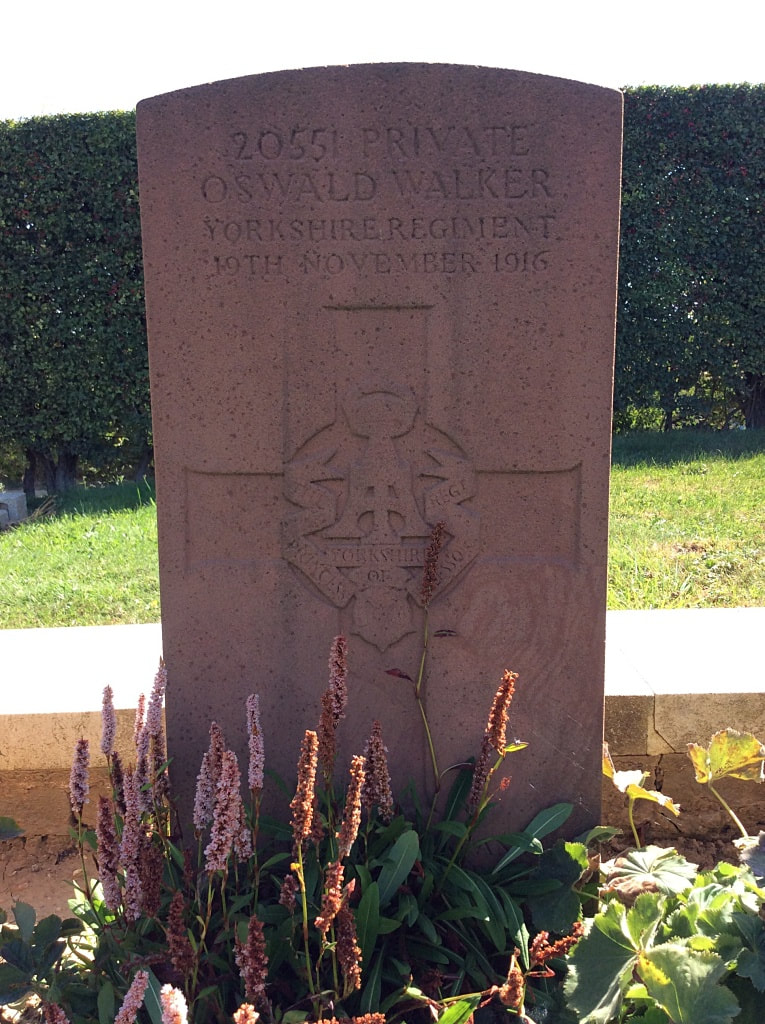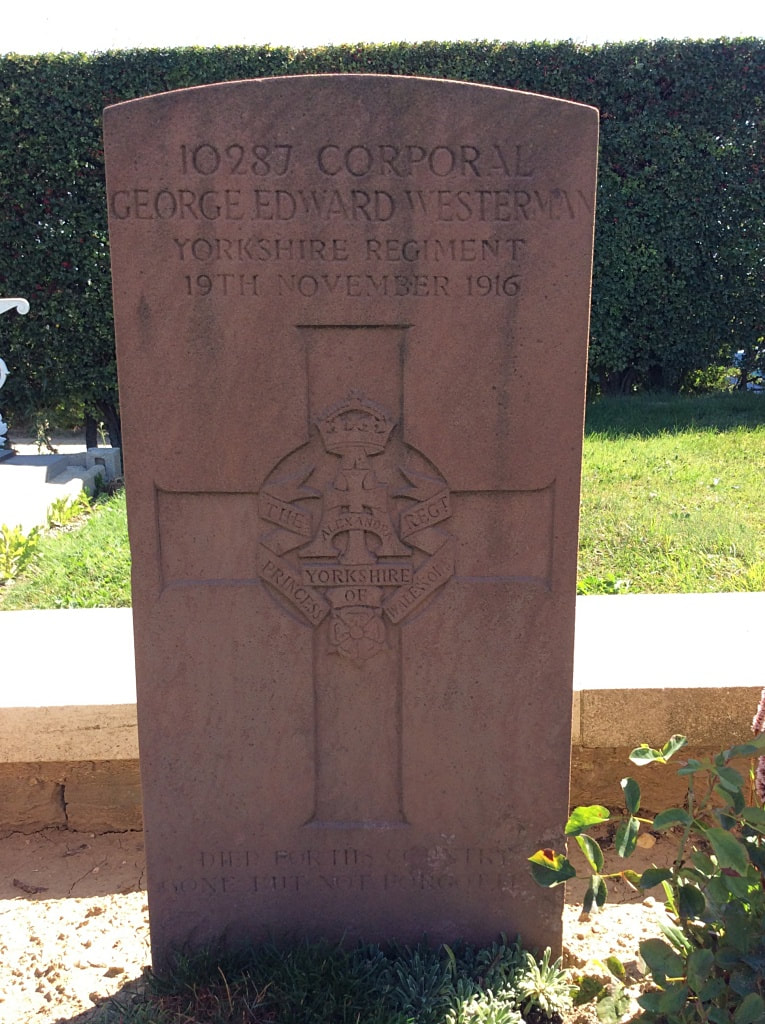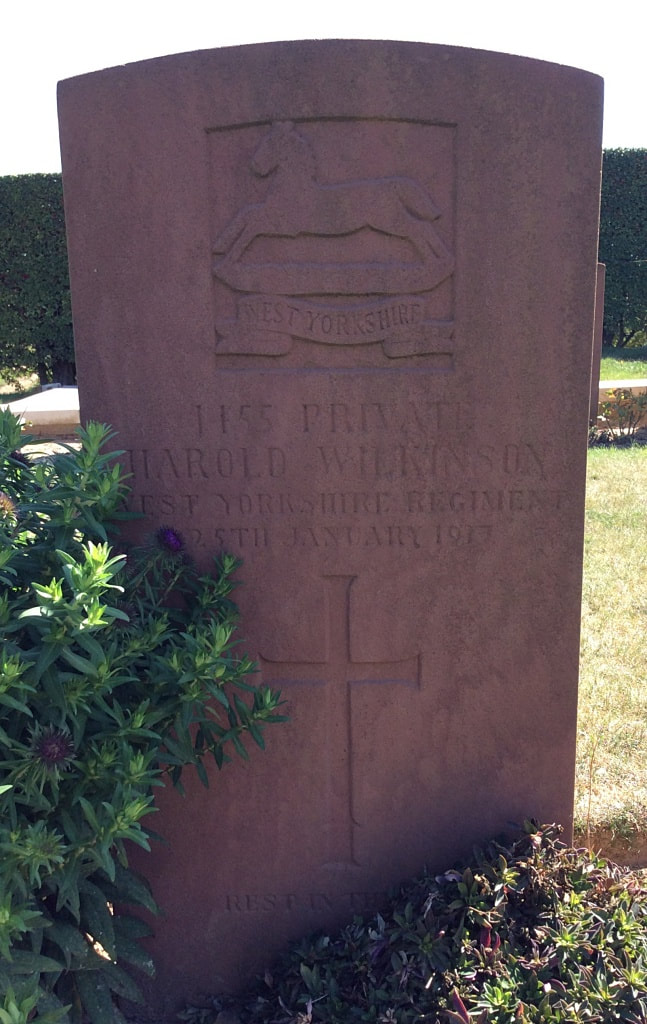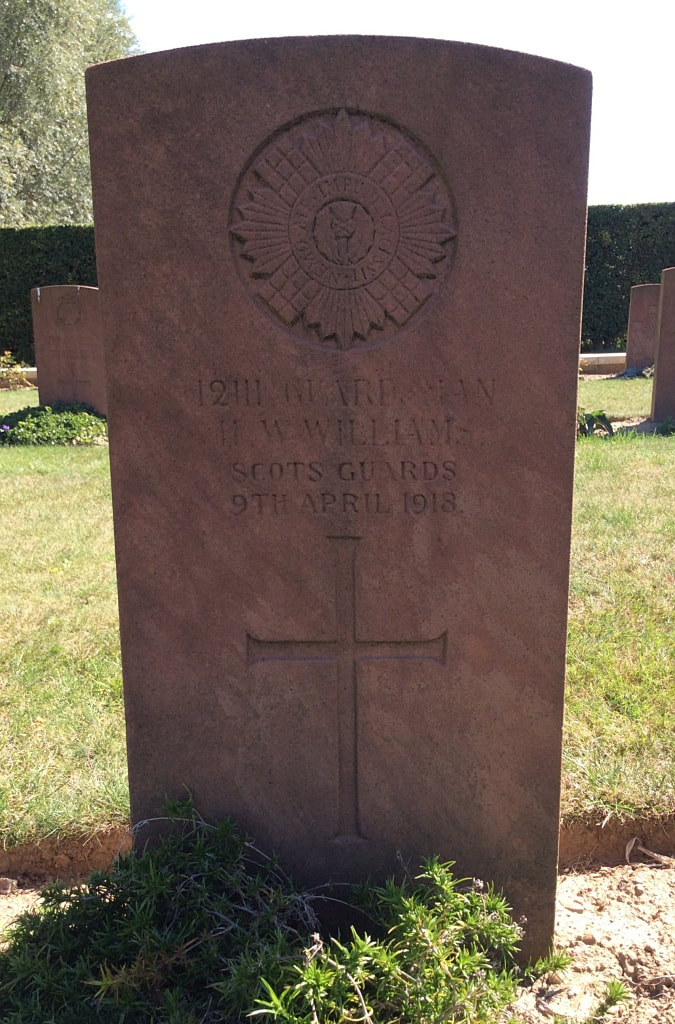BAILLEULMONT COMMUNAL CEMETERY
Pas De Calais
France
GPS Coordinates Latitude: 50.21275 Longitude: 2.60895
Location Information
Bailleulmont is a village 530 metres south of the main road from Arras to Doullens (N25). The Communal Cemetery is at the south-west end of the village, on the road to La Cauchie (D1); and in the east corner of it, to the right of the entrance, is a plot containing the graves of soldiers from the United Kingdom.
The graves in the British plot were made by Field Ambulances and fighting units in 1916-18. There are now 34, 1914-18 war casualties commemorated in this site.
Identified Casualties: United Kingdom 33, Canada 1. Total 34.
Bailleulmont is a village 530 metres south of the main road from Arras to Doullens (N25). The Communal Cemetery is at the south-west end of the village, on the road to La Cauchie (D1); and in the east corner of it, to the right of the entrance, is a plot containing the graves of soldiers from the United Kingdom.
The graves in the British plot were made by Field Ambulances and fighting units in 1916-18. There are now 34, 1914-18 war casualties commemorated in this site.
Identified Casualties: United Kingdom 33, Canada 1. Total 34.
Shot at Dawn
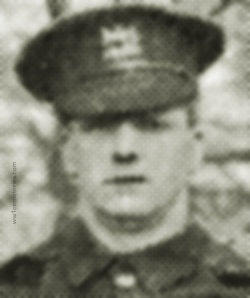
10495 Private
Albert Ingham
18th Bn. Manchester Regiment
executed for desertion 1st December 1916, aged 24.
Row B. 12.
Son of George Edward and Eliza Ann Ingham, of Atherton Cottage, Lower Kersal, Manchester.
His headstone bears the inscription "Shot At Dawn, One Of The First To Enlist, A Worthy Son Of his Father"
10502 Private Alfred Longshaw, C Company, 18th Bn. Manchester Regiment, executed for desertion 1st December 1916, aged 21. Row B. 13. Son of Charles and Elizabeth Longshaw, of Pendleton; husband of Mary Frances Longshaw, of 21, Milnthorpe St., Pendleton, Manchester.
Privates Ingham & Longshaw were friends who worked together in Salford as railway clerks, joined up together, & served together through the Somme campaign, being transferred on 7 July 1916 to the brigade machine-gun company.
On the night on 5-6 Oct 1916, they disappeared from their unit at Buire, when under orders to go to the front line at short notice.
On 1 Nov, they were found, wearing civilian clothes, on board a Swedish ship in Dieppe harbour. Both claimed to be American citizens. However later the same day, their true names were acknowledged & admissions made: Longshaw that he had deserted, Ingham that: ‘having lost most of my pals, I decided to clear out with Longshaw’.
At trial on 20 Nov 1916, Ingham said that he had been concerned for his mother’s reactions to the loss of his chums; that he had left in order to see those at home, & then to enlist in the Navy in which his brother served. He pleaded for leniency on account of his 12 months’ good service, & sought to make atonement.
Longshaw said that he was worried about the people at home & intended to join his brother in the Navy. Service on the Somme, particularly the loss of almost all his comrades had affected his mind; & all immediate prospect of leave had been denied. Longshaw too sought to make reparation for his offence.
Following conviction & sentence, with endorsement from all formation commanders, instructions were given for the sentence of death to be promulgated to the 2 soldiers ‘before as many men as you have at Bailleulval’.
Unsuccessful efforts were made on behalf of the 2 condemned men (who had been regular church-goers at home), the newspapers in their home-town being misled about the true cause of death. Ingham’s father was likewise deceived for several years, but in due course insisted on the truth coming out — requesting, & the Imperial War Graves Commission reluctantly granting a unique inscription: see the photograph of the headstone..The 2 comrades are buried side by side, & are also commemorated on the War Memorial at Salford Railway Station. (Corns, pp. 256-9; Putkowski, pp. 138-140; Babington, pp,120-121; Ward & Gibson, p.81)
Albert Ingham
18th Bn. Manchester Regiment
executed for desertion 1st December 1916, aged 24.
Row B. 12.
Son of George Edward and Eliza Ann Ingham, of Atherton Cottage, Lower Kersal, Manchester.
His headstone bears the inscription "Shot At Dawn, One Of The First To Enlist, A Worthy Son Of his Father"
10502 Private Alfred Longshaw, C Company, 18th Bn. Manchester Regiment, executed for desertion 1st December 1916, aged 21. Row B. 13. Son of Charles and Elizabeth Longshaw, of Pendleton; husband of Mary Frances Longshaw, of 21, Milnthorpe St., Pendleton, Manchester.
Privates Ingham & Longshaw were friends who worked together in Salford as railway clerks, joined up together, & served together through the Somme campaign, being transferred on 7 July 1916 to the brigade machine-gun company.
On the night on 5-6 Oct 1916, they disappeared from their unit at Buire, when under orders to go to the front line at short notice.
On 1 Nov, they were found, wearing civilian clothes, on board a Swedish ship in Dieppe harbour. Both claimed to be American citizens. However later the same day, their true names were acknowledged & admissions made: Longshaw that he had deserted, Ingham that: ‘having lost most of my pals, I decided to clear out with Longshaw’.
At trial on 20 Nov 1916, Ingham said that he had been concerned for his mother’s reactions to the loss of his chums; that he had left in order to see those at home, & then to enlist in the Navy in which his brother served. He pleaded for leniency on account of his 12 months’ good service, & sought to make atonement.
Longshaw said that he was worried about the people at home & intended to join his brother in the Navy. Service on the Somme, particularly the loss of almost all his comrades had affected his mind; & all immediate prospect of leave had been denied. Longshaw too sought to make reparation for his offence.
Following conviction & sentence, with endorsement from all formation commanders, instructions were given for the sentence of death to be promulgated to the 2 soldiers ‘before as many men as you have at Bailleulval’.
Unsuccessful efforts were made on behalf of the 2 condemned men (who had been regular church-goers at home), the newspapers in their home-town being misled about the true cause of death. Ingham’s father was likewise deceived for several years, but in due course insisted on the truth coming out — requesting, & the Imperial War Graves Commission reluctantly granting a unique inscription: see the photograph of the headstone..The 2 comrades are buried side by side, & are also commemorated on the War Memorial at Salford Railway Station. (Corns, pp. 256-9; Putkowski, pp. 138-140; Babington, pp,120-121; Ward & Gibson, p.81)
1957 Private William G. Hunt, 18th Bn. Manchester Regiment, executed for desertion 14th November 1916, aged 20. Row A. 7.
A Regular with 2 years’ service on the Western front, he had previously been convicted of Disobedience which resulted in a sentence of 12 months’ imprisonment — which was commuted to 83 days of Field Punishment, No 1.
Hunt appears to have deserted from action during the Somme Offensive. At trial he was unrepresented; his Commanding Officer stated his behaviour to have been generally satisfactory; & later his Brigadier urged leniency. However his death sentence was confirmed, being promulgated to him at the customary battalion parade. Hunt rebuffed the equally customary attempt to get him drunk for execution, & in due course had to be dragged to the place of execution, where he had to be tied to a chair — & refused a blindfold. The firing was bungled, the attending officer having to administer the coup de grâce with his revolver. His local paper in Manchester reported that he had died of wounds. (Putkowski, pp 132-133)
10686 Private Benjamin O'Connell, 1st Bn. Irish Guards, executed for desertion 8th August 1918, aged 23. Row C. 7. Son of James and Mary O'Connell, of Tinnarath, Foulksmills, Wexford. He had already been convicted of 2 offences involving absence, 2 years' & 10 months’ imprisonment respectively being imposed — & presumably suspended when he deserted. O’Connell was the fifth & last Guardsman to be executed. (Putkowski, p. 253)
A Regular with 2 years’ service on the Western front, he had previously been convicted of Disobedience which resulted in a sentence of 12 months’ imprisonment — which was commuted to 83 days of Field Punishment, No 1.
Hunt appears to have deserted from action during the Somme Offensive. At trial he was unrepresented; his Commanding Officer stated his behaviour to have been generally satisfactory; & later his Brigadier urged leniency. However his death sentence was confirmed, being promulgated to him at the customary battalion parade. Hunt rebuffed the equally customary attempt to get him drunk for execution, & in due course had to be dragged to the place of execution, where he had to be tied to a chair — & refused a blindfold. The firing was bungled, the attending officer having to administer the coup de grâce with his revolver. His local paper in Manchester reported that he had died of wounds. (Putkowski, pp 132-133)
10686 Private Benjamin O'Connell, 1st Bn. Irish Guards, executed for desertion 8th August 1918, aged 23. Row C. 7. Son of James and Mary O'Connell, of Tinnarath, Foulksmills, Wexford. He had already been convicted of 2 offences involving absence, 2 years' & 10 months’ imprisonment respectively being imposed — & presumably suspended when he deserted. O’Connell was the fifth & last Guardsman to be executed. (Putkowski, p. 253)
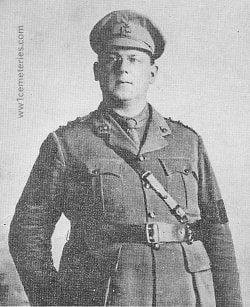
Chaplain 4th Class
The Reverend George Etienne Crochetiere
Canadian Army Chaplains Department attached to 22nd Bn. Canadian Infantry
2nd April 1918, aged 39.
Grave left of centre path between two french tombs
Son of Alphonse Crochetiere and his wife Josephine Cormier Crochetiere, of Arthabaskaville, P.Q., Canada. Ordained priest 9th July, 1905, at Nicolet Seminary.
His headstone bears the inscription "Aumonier Catholique Canadien Francais Priez Pour Lui"
The Reverend George Etienne Crochetiere
Canadian Army Chaplains Department attached to 22nd Bn. Canadian Infantry
2nd April 1918, aged 39.
Grave left of centre path between two french tombs
Son of Alphonse Crochetiere and his wife Josephine Cormier Crochetiere, of Arthabaskaville, P.Q., Canada. Ordained priest 9th July, 1905, at Nicolet Seminary.
His headstone bears the inscription "Aumonier Catholique Canadien Francais Priez Pour Lui"
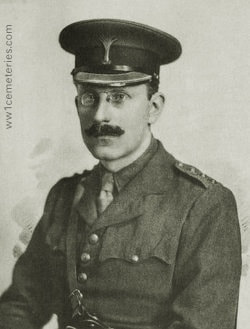
Captain
George Claud Latham Insole, M. C. & Mentioned in Despatches
1st Bn. Welsh Guards
12th April 1918, aged 30.
Row C. 6.
Son of Mr. and Mrs. Insole, of The Court, Llandaff Cardiff.
His headstone bears the inscription "He Shall Give His Angels Charge Concerning Thee"
George Claud Latham Insole, M. C. & Mentioned in Despatches
1st Bn. Welsh Guards
12th April 1918, aged 30.
Row C. 6.
Son of Mr. and Mrs. Insole, of The Court, Llandaff Cardiff.
His headstone bears the inscription "He Shall Give His Angels Charge Concerning Thee"
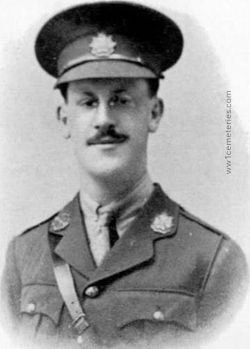
Second Lieutenant
Herbert Sidney Park
1st Bn. Border Regiment
26th October 1917, aged 23.
Row B. 1
Son of Sidney Beynon Park and Ellen Park, of "Highmead", Field Rd., Stroud, Glos.
His headstone bears the inscription "Mors Janua Vitae Pro Christo Et Patria"
Herbert Sidney Park
1st Bn. Border Regiment
26th October 1917, aged 23.
Row B. 1
Son of Sidney Beynon Park and Ellen Park, of "Highmead", Field Rd., Stroud, Glos.
His headstone bears the inscription "Mors Janua Vitae Pro Christo Et Patria"








